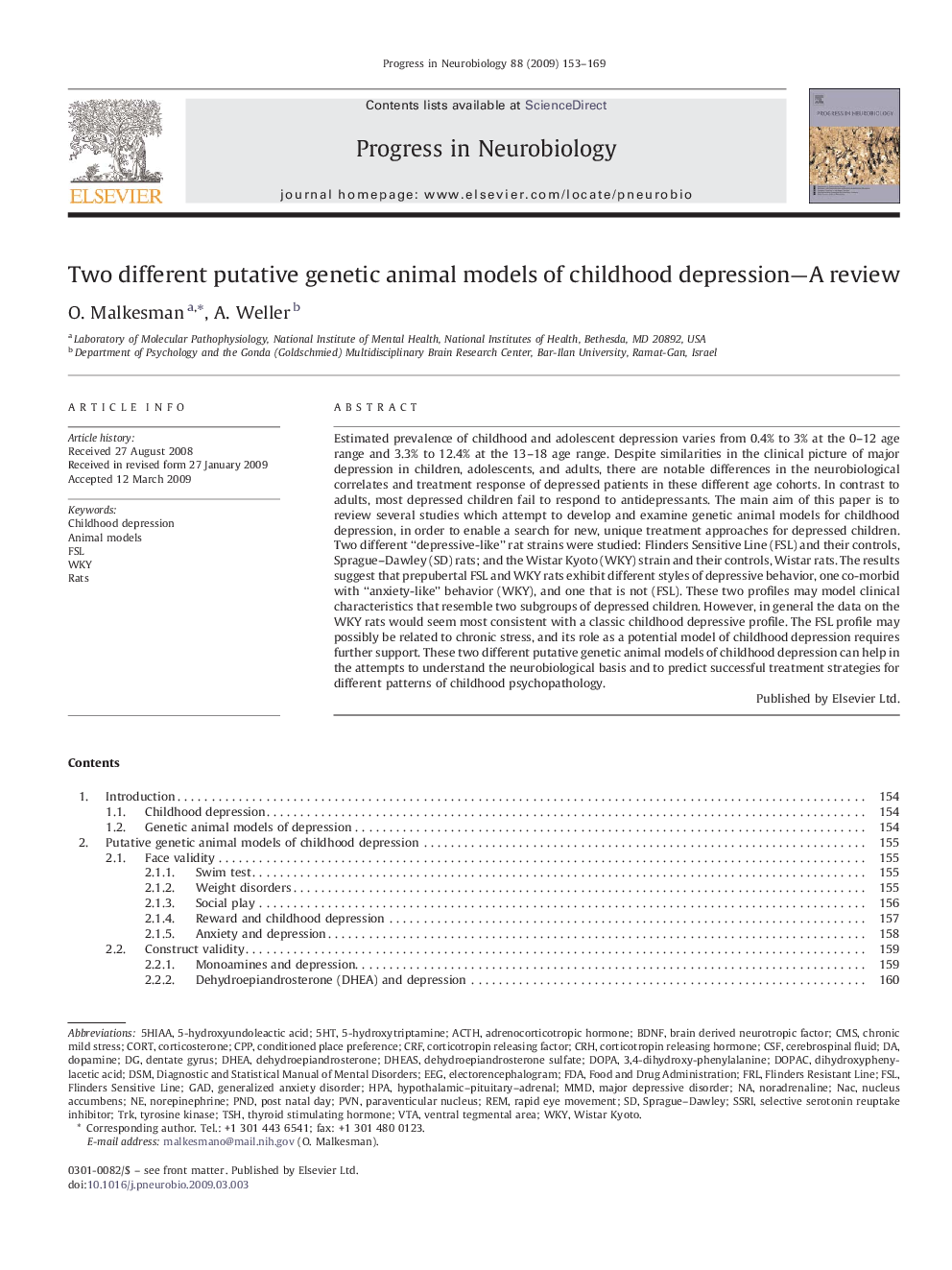| Article ID | Journal | Published Year | Pages | File Type |
|---|---|---|---|---|
| 4353711 | Progress in Neurobiology | 2009 | 17 Pages |
Abstract
Estimated prevalence of childhood and adolescent depression varies from 0.4% to 3% at the 0-12 age range and 3.3% to 12.4% at the 13-18 age range. Despite similarities in the clinical picture of major depression in children, adolescents, and adults, there are notable differences in the neurobiological correlates and treatment response of depressed patients in these different age cohorts. In contrast to adults, most depressed children fail to respond to antidepressants. The main aim of this paper is to review several studies which attempt to develop and examine genetic animal models for childhood depression, in order to enable a search for new, unique treatment approaches for depressed children. Two different “depressive-like” rat strains were studied: Flinders Sensitive Line (FSL) and their controls, Sprague-Dawley (SD) rats; and the Wistar Kyoto (WKY) strain and their controls, Wistar rats. The results suggest that prepubertal FSL and WKY rats exhibit different styles of depressive behavior, one co-morbid with “anxiety-like” behavior (WKY), and one that is not (FSL). These two profiles may model clinical characteristics that resemble two subgroups of depressed children. However, in general the data on the WKY rats would seem most consistent with a classic childhood depressive profile. The FSL profile may possibly be related to chronic stress, and its role as a potential model of childhood depression requires further support. These two different putative genetic animal models of childhood depression can help in the attempts to understand the neurobiological basis and to predict successful treatment strategies for different patterns of childhood psychopathology.
Keywords
CPPDHEAACTHFDAMMDFlinders resistant lineFRL5-hydroxytriptamineDHEASFSL5HIAACMSDOPAC5HTdehydroepiandrosteroneDSMCRHPNDNACDOPACRFGADBDNFgeneralized anxiety disorderMajor depressive disorderchronic mild stressconditioned place preferenceDopaminedihydroxyphenylacetic acidDiagnostic and Statistical Manual of Mental Disorderspost natal dayFood and Drug Administrationdehydroepiandrosterone sulfatedentate gyruscorticotropin releasing factorbrain derived neurotropic factorFlinders sensitive linePVNCerebrospinal fluidCSFHPAEEGnoradrenalinenorepinephrineNucleus accumbensadrenocorticotropic hormonecorticotropin releasing hormonehypothalamic–pituitary–adrenalCORTCorticosterone
Related Topics
Life Sciences
Neuroscience
Neuroscience (General)
Authors
O. Malkesman, A. Weller,
